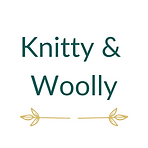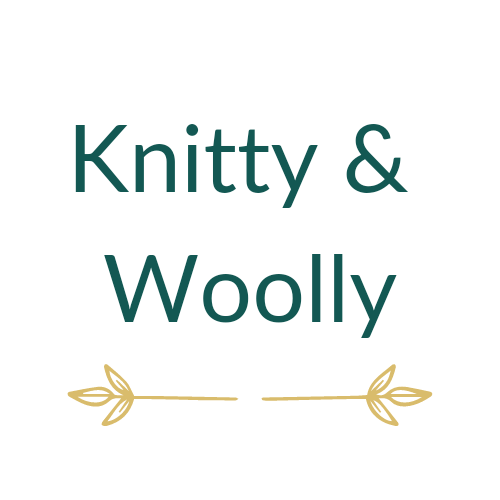Let's talk values and inspiration, for a natural and traceable wool!
- Knitty Woolly
- Apr 29, 2024
- 5 min read
Updated: May 29

In this article, I'd like to explain why wool inspires me so much in my day-to-day work, and share with you the values I uphold.
Wool, and more specifically sheep's wool, has been used for thousands of years in the manufacture of textiles. Easily accessible, it is naturally renewable because it always grows back after being cut from the sheep's back. Made up of protein fibres (keratin), wool products can easily be biodegraded at the end of their life cycle by micro-organisms [1]. Its physico-chemical properties make this fibre very interesting and unique. For example, its scale-like structure increases its surface area in contact with the air while slowing down its circulation, over a wide range of temperatures. So it doesn't just keep you warm, it keeps you cool. It can also absorb up to 35% of its weight in moisture, which is then released as water vapour into the air [2]. So we stay dry too!
Despite their many advantages, cheaper synthetics have gradually taken over from wool and other natural materials in the global textile market, and are now making their way into our wardrobes. And yes, most of our clothes are now made of plastics! Synthetic materials, produced from hydrocarbons, are also dyed with chemical dyes derived from petroleum, which have direct and harmful consequences for the human health of workers and consumers, and of course for the environment, which is greatly impacted. According to ADEME, dyeing alone is responsible for 20% of the world's water pollution. Wool, on the other hand, has become a noble material, used to make mid-range and top-of-the-range products.

So what do we do about it? Fortunately, it's not all doom and gloom, as some voices are speaking out in favour of change, in terms of both practices and attitudes. Many players have decided to (re)turn to natural raw materials that respect the environment, animals and people. Wool is one of them. But we have a long way to go, because the wool industry in France and more widely in Europe has seen a drastic decline in activity over the last few decades. So we need to rebuild, to recreate the link between the land, the animals, the breeders and the new players in the industry. We also had to recreate the link with the machines and the technical know-how that had been lost or forgotten. All this is taking shape again now, and it's an incredible source of energy. Together, I'm convinced we can do a lot, and there's so much to do!

All these ideas about the environment, biodiversity and our way of life are fundamental to me and guide me on a daily basis. They were passed on to me by my parents and grandparents, and by the place where I grew up, the Pyrenees. An area that is still partly unspoilt, but that needs to be protected. That's where the Lourdaise ewe comes in. A breed of ewe that is emblematic of the Pyrenees, yet still endangered to this day. So when my father undertook to help save it over thirty years ago, he may not have imagined that I would be continuing the fight in my own way: by adding value to its wool. This material, which is harvested every year (because it is essential for the health of the animals), generally earns nothing for the breeders, who are faced with competition from foreign wools. As a result, the wool accumulates and the breeders, no longer knowing what to do with it, even come to describe it as waste. Faced with this situation, I wanted to get involved in the wool industry to promote this noble material and give it back its rightful place.

Wool itself fascinates me. Its feel, its structure, its shape, its colour. Its many properties too, which demonstrate the power of this natural fibre. And all the things you can do with it. As I said earlier, wool has been used for thousands of years to make clothes. And back then, it took so much time to spin yarn on a spinning wheel or spindle that the rare garments that were created were precious and darned as much as possible when needed. Nowadays, spinning mills and industrial spinning mills can produce yarn in larger quantities and more quickly than by hand. All the wool needs is to be processed. So we have yarn available to us, ready to be knitted, woven, crocheted... It's no less important to reuse and repair as much as possible.

My positioning in this sector was clear from the outset: I wanted to offer a natural, traceable wool yarn that reflects its terroir and is produced in a way that respects animals, people and the environment as far as possible.
By natural wool, I mean:
-wool that has not been carbonised (a chemical process requiring sulfuric acid to destroy plant debris), but simply subjected to the mechanical action of machines to remove as much of this debris as possible (not forgetting the little hands at the sorting stage)
-wool that has not been treated 'superwash', a process that involves applying a resin to the fibre to prevent it from felting when the garment is washed (at the same time reducing its insulating properties)

-wool that has not been dyed with synthetic dyes, but rather with vegetable dyes, by hand and without the use of synthetic alum mordants.
In this way, the wool retains all its natural properties and the resulting yarn is all the more authentic.
When I was looking for partners to take care of the various stages of processing, I wanted to turn to local, artisanal companies that have all these skills. There aren't many of them, but they do exist. And thanks to the Filature de Niaux in Ariège and the Myrobolan workshop in Creuse, the result is there. I'm so proud and happy. Now we just have to keep going - it's only the beginning!

On the other hand, I wanted to offer hand-spun wool creations. For me, working with this fibre by hand from A to Z is essential. It allows you to connect with and understand the material, to acquire skills and techniques, and simply to take the time. What's more, a handmade creation tells a story, reflects the personality of its creator and reflects values... Values that I can share and pass on during creative workshops, which are also rich in human encounters.
I hope that these few words have aroused your curiosity and that you have found yourself somewhere in all this. I look forward to hearing from you, so don't hesitate to drop me a line!
Références
[1] The wool handbook, Morphology, Structure, Properties, Processing, and Applications The Textile Institute Book Series, 2024, Pages 401-440
[2] J. Chybik, Natural Building Materials, 978-80-247-2532-1, Grada Publishing, a.s., Prague, Czech Republic (2009)





.png)





Comments